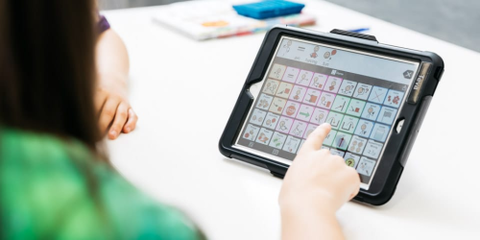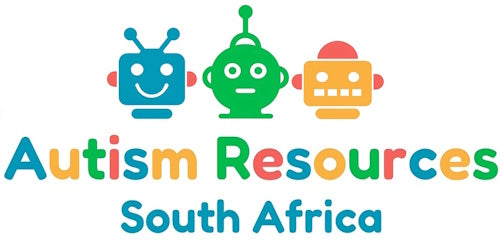Assistive technology for autistic children (and adults)
Jaco de GoedeAssistive technology is something that I haven't really explored yet, simply because our kids have never really needed it. But one of the first trends from our customer survey is that many of you are asking for more assistive technology.
To a large degree my view has been that assistive technology is prohibitively expensive and there are probably mobile apps available that can do 90% of what these devices do. But, based on your response, let's dig a bit deeper to have a more informed opinion.
What is Assistive Technology?
According to Autism Parenting Magazine, assistive technology (AT) is defined as any product, equipment, software program, and/or system that enhances learning, working and daily living for persons with disabilities. The goal of assistive technology is to increase, maintain, or improve the functional capabilities of people with disabilities.
Assistive technology serves two major purposes: to augment an individual’s strengths, thereby counterbalancing the effects of the disability, and to provide an alternative method of performing a task. Thus, the use of technology allows people with disabilities to compensate for their disability or circumvent it entirely.
Types of Assistive technology
Assistive technology is classified based on the level of technology involved:
Low-tech AT tools are often characterized as tools that do not need batteries or electricity to operate. These are often found in a multisensory, differentiated classroom as “accommodations” and require little-to-no training to operate. Low-tech tools can even include weighted blankets, no-tie shoelaces and pencil grips.
Mid-tech AT tools require a bit more training as they may be battery-operated and add a level of specialization that low-tech tools might otherwise not. An example of a mid-tech AT support could be output devices, audiobooks, or screen magnifiers.
The most complex technology supports requires the most training on their use, as they are highly specialized and customizable based on individual needs. High-tech AT tools are usually electrically-powered devices such as tablets, communication devices or specialized computer software. These tools have more capabilities and features that warrant ongoing assistive technology consultation and training.
How Assistive Devices can assist autistic people
AT devices can play a role in many aspects of our lives, including:
1. Social skills
You’re likely already familiar with social stories as an instructional tool to teach your child social skills. There are social story apps such as Pictello, Book Creator, or Little Bird Tales that can be used to create and review these social skills expectations in multi-sensory ways. These apps provide supported visual information (text highlighting when read, pictures or icon-supported text), auditory feedback (text read aloud/narration), and video modeling in order to communicate and teach social skills.
2. Writing
Writing is a motor task, but at its core, it is communication! Tools for writing can include supports at each step of the writing process: ideation, planning, and actual writing production (or typing). Recently, assistive technology companies such as Don Johnston have been designing writing curriculums for complex learners to engage as authors with varied supports. Even if your child does not have the ability to hold a pencil or spell words, he/she can still be a “writer!”
Assistive Technology tools for writing can vary from low-tech graphic organizers, pencil grips, and adapted paper, to more mid-tech icon-supported writing or tape recorders for an oral rehearsal of ideas. High-tech AT for writing offers extensive writing, and many robust AAC programs can be used to facilitate the writing process.
3. Reading
Reading is another academic task that integrates many critical skills: holding a book, visually attending to text and pictures, decoding (reading the words), comprehension (understanding what is read), and visually scanning multiple lines of text and complex pictures. Whether your child needs a slant board to prop the book, text-to-speech programming that reads text aloud, audiobooks to appeal to the auditory system, or a simple reading window to minimize visual distractions on the page, there are AT tools that can make it easier.
4. Activities of Daily Living
Your child’s occupational therapist has likely identified ADL skills that are hopefully addressed in therapy – these can include tasks like dressing, fastening buttons/snaps/velcro, tying shoes, making simple meals, grooming, eating. Oftentimes, the AT supports for these tasks include making adaptations for motor difficulties. For example, no-tie shoelaces becomes an AT tool for kids who cannot tie their shoes.
5. Executive Functioning
Planning, organization, attention, task completion…all of these executive functioning skills have the potential to limit a child’s independence. Assistive technology supports for executive functioning are all designed to maximize independence while accommodating these skill deficits. Visual schedules, timers, wearable technology supports, calendar systems, and virtual assistants like Siri, Alexa, and Cortana can all fade the adult support needed to keep kids on-task, remind or prompt transitions, and help structure multi-step activities.
6. Communication
Communication can look very different based on the task, environment, and individual skills. As estimates of the proportion of children with autism who are minimally verbal vary from 25%to 35%, AT for communication is a high priority for parents in the autism community.
Available assistive communication devices and strategies
A variety of assistive communication devices and strategies are available:
1. Visual Boards
Visual boards help children with autism express their preferences, emotions, understand rules, and schedules. Visual boards usually consist of a series of pictures, sometimes with words labeling each picture that children can point to or arrange in order to express their needs or desires. Visual boards can be modified to an individual child’s needs by showing simple or more complex images. Often times, the images are attached to the board with Velcro or other adhesives so that children can arrange them into their desired schedule or place the appropriate image after a question (e.g., What do you want to eat?).

2. Picture Exchange Communication System
PECS are broken down into six progressive phases: how to communicate, distance and persistence, picture discrimination, sentence structure, responsive requesting and commenting. These buildable skills teach functional communication and even help some children develop speech. Children begin at stage one showing their teacher or communication partner a picture of something they desire—a cookie or juice, for example, and their requests are immediately honored. As students progress, they arrange pictures into sentences and then use to learn modifiers, initiate conversation, and answer questions. Pictures can be bought in a set or made at home to customize them to your child’s exact needs.

3. Sign Language
Sign language is considered one of the most practical and functional forms of communication for children with autism. Sign language is widely recognized by a variety of communities including the deaf and hearing impaired community and is a formally recognized form of language. Children with autism often benefit from Signing Exact English (SEE) as opposed to American or British Sign Language. SEE follows the speech pattern and sentence structure of spoken English making transferring their signs to speech as their language develops much easier. A variety of methods are available to help a child with autism learn sign language ranging from flashcards to videos or taking lessons from a certified sign language instructor. Children who are visual or tactile learners may pick up sign language easier than auditory learners do.
As with all communication methods, different children will do better with different interventions. For some children with autism, gestures can be particularly difficult to associate with language, while others will more easily connect gestures to phrases and desires. Children with some speech skills might do better with gestures than their nonverbal peers. By pairing speech with gestures to fill in gaps of their spoken language. Gestures may be supplementary to sign language or of the child’s invention. It is important for caregivers and parents to be aware of these gestures and their meaning so that the child’s needs can be met.
4. Low technology AAC interventions
Low technology AAC interventions are generally “parts of a whole.” These may include the Velcro for visual boards, adaptive writing tools including weighted pencils, large ruled paper, stress balls, or other manipulatives. These low technology interventions usually assist children in accessing language and speech skills they already have.

5. High technology electronic devices
High technology devices are quickly rising in popularity as they become more obtainable. These devices can vocalize speech for children who can either type or identify pictures. Apps are available for smartphones and tablets for children to try to see if the technology works for them before trying more intricate devices. These devices will not necessarily stop children from talking, and many even develop speech after using AAC devices. It is important to note that it may take months or even years for a child to master a device.

Autism Parenting Magazine has a great article describing how to decide on the best AAC device here.
Tips for Choosing Assistive Technology Devices
Autism is a complex and often disabling condition that affects communication and social skills. For some people on the autism spectrum, the use of assistive technologies can be a lifesaver. Here are five tips for using assistive technologies devices to best suit the needs of people with ASD:
- Make a list of the devices you might need and their capabilities. This will help you determine which devices are best suited for your needs.
- Evaluate each device before using it to make sure that it is comfortable and easy to use. Some devices may require special settings or adjustments in order to be effective, so be aware of these things before using them
- Be patient–with time and practice, most people with ASD can learn how to use AAC devices effectively and independently.
In conclusion, technology has been widely used to help humans in every aspect. We have adopted technology as part of our daily lives and assistive technology can play an important role to assist and help anyone with autism to enhance their social skills, communication skills and executive functioning. So, expect more information about this from us and hopefully, some technology tools will be available on our website soon.

